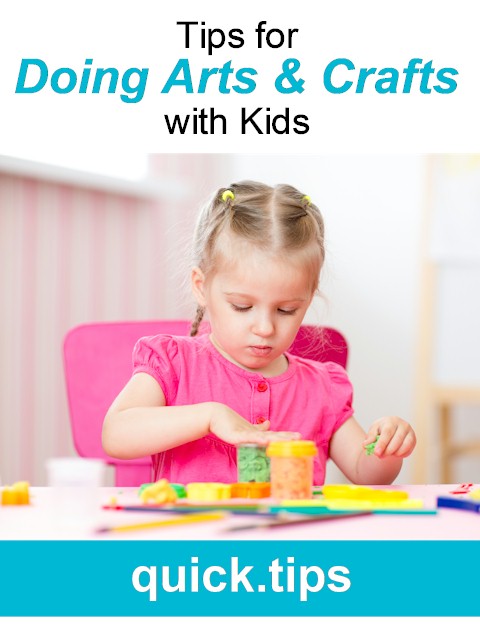Need some Tips for Crafting with Kids? For some, crafting is second nature, for others, it is a fun way to interact with their children. Whatever your reason, there is a chance it is something you may not have done in a while, and a few pointers are always helpful.
For as long as I can remember, I’ve been the crafty type. Making doll clothes at 6, entering art contests (and winning) at 10 to starting my own blog, ActivitiesForKids.com over 20 years ago. So, I’ve gathered some of my more practical tips from crafting with my children (and now grandchildren) to help you get started.

Young children love exploring textures, colors and shapes. Often, the best way for them to express themselves is through arts and crafts. Since the beginning of time, human culture was initially expressed through art. It’s natural to want to create (for most of us anyway:)
Whether you are planning a free-form art project with your child or some creative craft posted on Pinterest, here are a few pointers to help you and your child have a fun, frustration-free time.
7 Tips for Crafting with Kids
Getting Started
1. Choose age-appropriate activities. If you are expecting your 4 year-old to create beautiful papier-mâché vase, you are both likely to be very disappointed. Know your child’s abilities and select a craft that is right for them. Find something they will enjoy doing, otherwise, crafting time will become a chore or struggle if it does not end on a positive note. Remember, you are doing this for fun, not for profit.
2. Upfront prep will make the process run smoother. Find an uncluttered workspace that is easy to access for your child. The kitchen table usually works well for this. Cover the workspace with newspaper or a disposable plastic tablecloth. If using paints, be sure to wear clothes that you don’t mind getting splattered with paint or glue. If you’re not stressing about the mess, you’ll have more fun.
3. Be sure to have all supplies at the start of the project. It’s no fun to get part way though a project only to find you are missing some of the supplies. If you are following instructions, be sure to pre-check what you’ll need. For free-form or inventor box crafting be sure to have the basics (glue, tape, stapler, ruler, crayons, markers…) Also, keep a trash can near by. Clean-up will be a breeze if you keep it tidy as you go.
Making it a Positive Experience
4. Measure twice, cut once. If instructions call for a specific measurement, there might be a reason why. The success of following a recipe or craft often times depends on the accuracy of the measurements. Also, make this a teaching moment for your child, showing how to measure and the importance of doing so.
5. Remember that patience is a virtue. Small, inexperienced hands work at their own speed and accuracy level. That’s why it’s important to first follow tip #1, choose age-appropriate activities. Secondly, allow more than enough time to do the planned activity. Don’t set time limits. Again, this is a fun one-on-one time for you both. If you have chosen a craft that needs time for the glue to dry before moving to the next step, take a break, and read a story. If longer drying time is required, put it someplace safe until you can come back to it. This is a good opportunity to teach about time and even setting an alarm.
6. Allow their creativity to flourish. If they are having fun and want to paint the tree blue, let them do so. If you put too many restrictions on the situation, they will lose interest real quick! Praise and smiles from a parent does wonders for a child’s self esteem. Let them know you enjoy them, and spending time together creating.
7. Clean up is part of the crafting process. Actually it’s part of most things we do in life. Teach that crafting items should be stored together so they are easier to locate next time.












